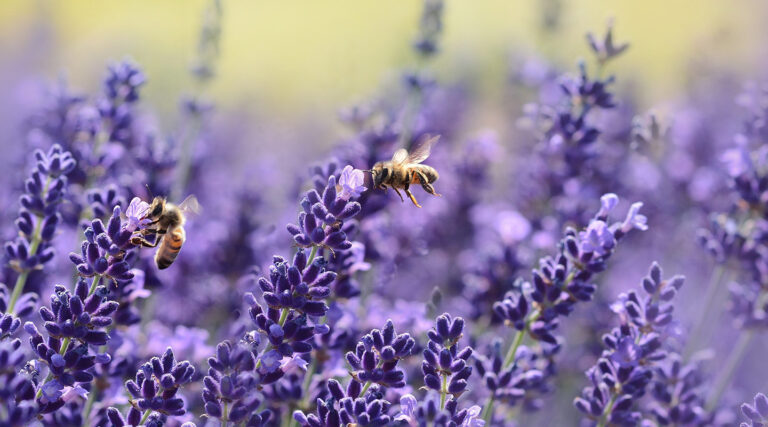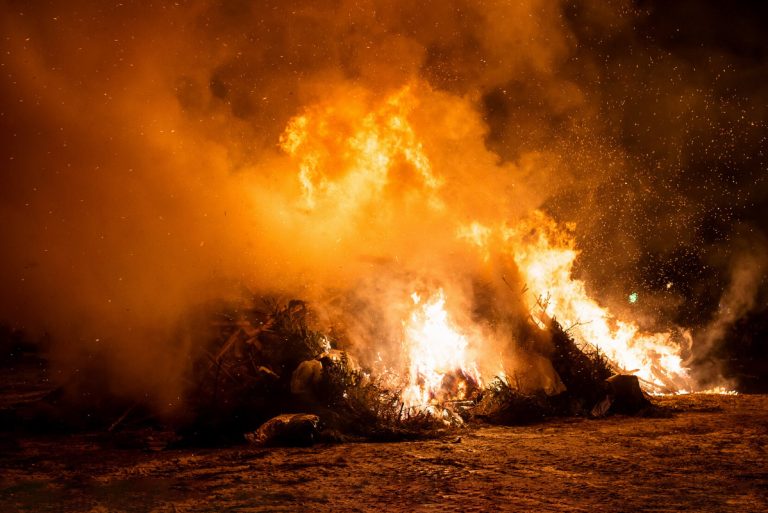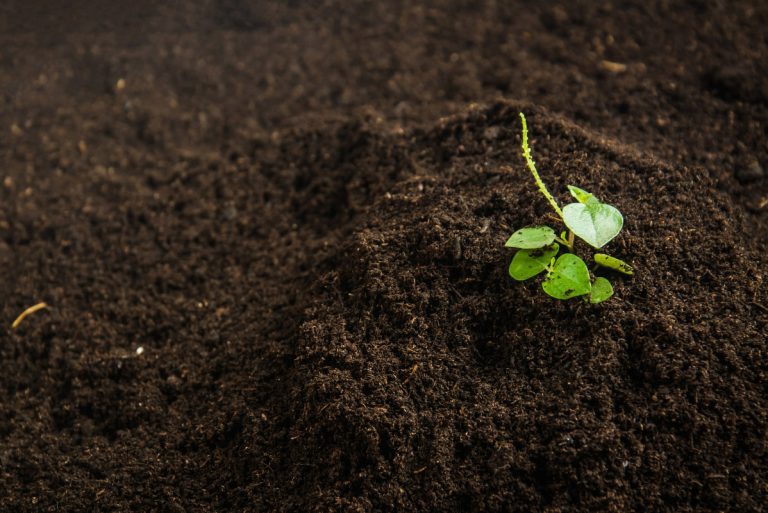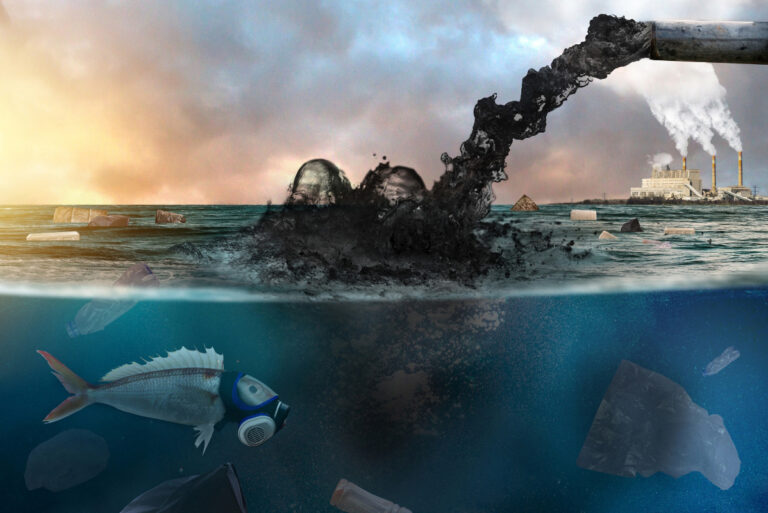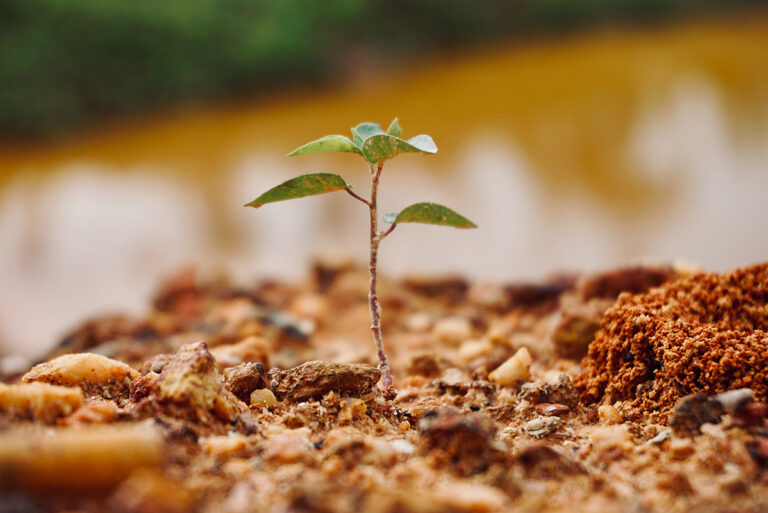Do you know what the Sociable Lapwing, Blue-eyed Spotted Cuscus, and the Seychelles Bizzie Lizzie have in common?
They are all critically endangered species according to the International Union for Conservation of Nature (IUCN) Red List. This means they are facing serious environmental pressures that can soon push them over the edge to extinction in the wild.
The 42,100 species currently threatened with extinction represent only a tiny fraction of all species currently existing on planet Earth. Biodiversity is the term that includes all of nature’s species abundance. Today, biodiversity faces multiple threats.
In this article, we explore the statistics, facts and considerations relating to the top ten threats to biodiversity. Hopefully, this information will motivate you to help reverse course on these top 10 threats to biodiversity before it’s too late. Learn how below.
What is biodiversity?
Millions of years of evolution have fashioned a wide array of life forms, known as biodiversity (contraction of biological diversity or biotic diversity). Spanning all five taxonomic kingdoms of living things, scientists estimate that there may be up to one trillion species on Earth.
More conservative estimates range from 5.3 million to 8.7 million. By locating markers unique to a particular groups’ DNA (genetic) samples, scientists declare taxonomic classifications.
These varied life forms also possess definitive but invisible genetic diversity in their DNA. When the genetic diversity between individuals or distinct populations is great enough, scientists divide them into different species. In cases where there is much genetic overlap but not enough to warrant a new species declaration, biologists may make subspecies designations.

Source: Wikimedia / Christian Ziegler
What is the sixth mass extinction?
Most scientists believe that life on Earth is currently undergoing a sixth mass extinction. This means there is a large number of distinct biological species disappearing from the planet in a short time frame. The current dieoff is comparable in scale to those of past geologic periods, making it a discrete occurrence.
To determine whether the current biodiversity loss is a distinct biological event of accelerated proportions, scientists published a 2015 article assessing the data on vertebrate extinctions. They analyzed the numbers against a background rate of extinction of two mammal extinctions per 10,000 species per 100 years. This assumption is twice as high as the commonly accepted background rate of extinction.
The researchers concluded that extinctions are happening up to 100 times faster now compared to the baseline. Other research teams, using DNA studies as well as the fossil record, recalculated a lower historical background rate of extinction. Using it, they placed today’s extinction rate at 1,000 times faster than at any time in Earth’s history.
As scientists doing this research proposed, huge population shrinkages and range losses of even “species of low concern” (i.e., those not threatened or endangered as defined by the IUCN) indicate that something different is going on in the current extinction.
Many dwindling animal and plant populations around the world signal the human causal nature of this biological event unlike all the other of Earth’s mass extinctions.
In fact, a 2022 World Wildlife Fund report concluded that since 1970, there’s been an average decline of 69% in vertebrate populations across the globe. Here are some examples from the Report:
- 83% loss in freshwater fish
- 94% decline in wildlife in Latin America and the Caribbean
- 71% reduction in sharks and rays
Due to various environmental pressures (threats to biodiversity), threatened or endangered species on the IUCN Red List are at risk of going extinct in the wild this century.
Here is a breakdown of the current status of the 42,100 species (28% of all assessed species) threatened with extinction:

For the vanishing populations of threatened or endangered species still on Earth, corrective action to eliminate threats to biodiversity must occur now or experts predict the escalating threats will cause great numbers of extinctions within decades.
Here is a table listing all mass extinctions to date with their believed causes:
| Extinction Event | Time (millions of years ago, MYA) | Believed Major Cause |
|---|---|---|
| Ordovician | 445 | Movement of a supercontinent |
| Late Devonian | 370 | Kellwasser Event (low temperature) and the Hangenberg Event (low oxygen) |
| Permian-Triassic (Great Dying) | 252 | Not well understood |
| Triassic-Jurassic | 201 | Not well understood |
| Cretaceous-Paleo-gene | 66 | Asteroid |
| Holocene or Anthropocene | Ongoing | Human-caused |
During today’s sixth mass extinction, experts currently believe up to 150 species are going extinct every day. And that’s counting only the species we know of. Biologists estimate there are countless more species in existence. They are uncatalogued, possibly disappearing before scientists have a chance to discover them.
What is a biodiversity hotspot?
An idea developed by ecologist Norman Myers in 1988, biodiversity hotspots are regions with a great variety of plant species that are undergoing extreme environmental stressors such as deforestation.
The specific criteria are:
- Contains 1,500+ species of vascular plants found nowhere else on Earth
- 70%+ reduction in native vegetation
To indicate how minimal these criteria are, some of today’s biodiversity hotspots contain over 15,000 native plant species and have undergone a 95% habitat loss. The list includes the tropical Andes, Wallacea, Caucasus, and the coastal forests of Eastern Africa.
The map below shows where the biodiversity hotspots are:
What are the top ten threats to biodiversity?
The top ten threats to biodiversity are human behaviors, corporate practices, or governmental policies that make it difficult for other species to survive on Earth. Those listed below are inter-connected. Some of them exist in cause-and-effect relationships. The descriptions that follow highlight the major connections.
It is difficult to list the threats to biodiversity definitively in order of priority. Different criteria would alter the order. Those biodiversity threats with the greatest global impact appear closer to the top of the list. The first three fall under the general category of habitat loss.
1. Deforestation
Cutting down intact forests to make way for crops, roads, or buildings is called deforestation. By far, cutting down forests for agriculture is the major reason for this land use change. Global deforestation peaked in the 1980s, but there is still a lot going on.
To find out where deforestation is occurring anywhere in the world, the interactive tools on Global Forest Watch are useful.
Deforestation is not the same as net forest loss. The difference between deforestation and any new forest that has been planted or restored equals the net loss in forest. Since 2010, the Earth has had a net forest loss of 4.7 million hectares per year. According to the Food and Agriculture Organization, the deforestation rate is 10 million hectares/yr.
Here’s a helpful chart to show how humans have already cut down over 33% of the world’s forests over time.

Deforestation effect on biodiversity:
Human encroachment on wildlife habitat forces animals to flee their homes. If other natural homes aren’t available, animals die. When deforestation is common, wildlife may resettle closer to humans.
Deforestation leads to greater proximity of wild animals with humans. The spread of zoonotic diseases, jumping across species to people, becomes more likely. This is a leading hypothesis on how the SARs viruses, including the one that causes Covid-19, reached humans. Since they present new challenges to human immune systems, it’s easy to see how global pandemics can spread.
2. Industrial agriculture
Closely related to deforestation, industrial agriculture is a unique threat to biodiversity. The intensification of food production on a global scale for a burgeoning human population demands that more and more land must be cleared for crops (33% of all land) or pasture for grazing cattle (66% of total land surface).
So far, 38% of all land surface on Earth is devoted to agriculture. Wetlands are also filled for agricultural and other purposes at a rate three times faster than forests are being cut down. Six states in the United States have 85% or more of their wetlands cleared for agriculture. California, an agricultural powerhouse, has up to 91% of its wetlands converted for crops.
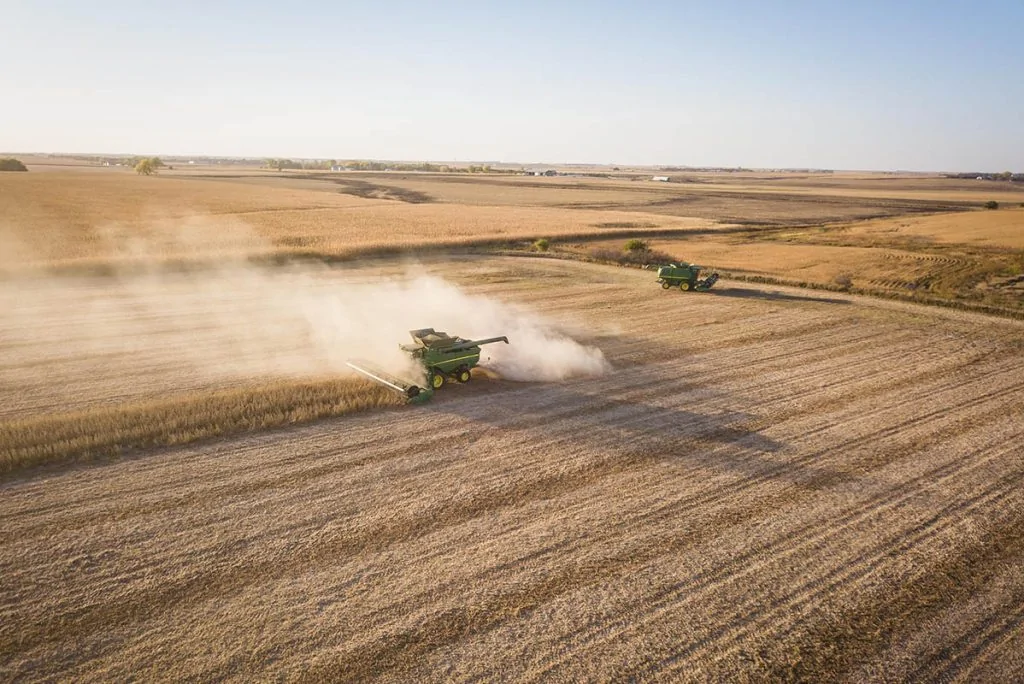
Aquaculture, the intensive raising of fish and seafood for human consumption, is the fastest-growing segment in animal agriculture, especially along the coastlines of many countries. Shrimp farming in particular resulted in the destruction of up to 50% of mangrove forests in the 1970s-90s. Important carbon sinks, mangroves draw down carbon from the atmosphere so it won’t contribute to the climate crisis.
Industrial agriculture’s effect on biodiversity:
The United Nations Environment Programme stated that up to 86% of all species at risk for extinction are threatened by agriculture, which they refer to as the primary driver of biodiversity loss. Up to 40% of all species live or mate in wetlands. Without habitat, species go extinct. In studies on mangrove losses and biodiversity, 70 plant species were in decline. Eleven of those were threatened with extinction.
3. Livestock production
As a category of industrial agriculture, rearing animals for food is a specific threat to biodiversity. To satisfy a growing human population’s desire for meat, livestock production is intensive. Whether it’s raising greater numbers in smaller spaces, or rearing bigger animals more quickly, livestock consume huge amounts of natural resources, especially land and water for the crops to feed livestock. This means there are fewer wild animals and plants remaining in those converted areas.

Source: Wikimedia / Zeloneto
A 2015 study looking at trends in land use concluded that the land needed to support livestock for the estimated human population in 2050 was up to 50% greater than the current land allotment for livestock production in those countries. That growth would occur on 15 biodiversity hotspots where land would need to be converted. As a consequence, biodiversity would dramatically decline.
Effect of livestock production on biodiversity:
Besides the projected effects noted above, global livestock production is the third largest emitter of greenhouse gases driving the climate crisis. Cattle represent 65% of those emissions, producing 44% of the methane coming from livestock production. Livestock production threatens biodiversity, which depends on a stable climate to flourish.
4. Overfishing
The fishing industry is responsible for the marine equivalent of industrial food production. Termed overfishing, the removal of individuals of a species at a rate greater than what can be naturally replenished is causing havoc in marine ecosystems.
With huge, mechanized nets trawling the deep seas — including the ocean floor — approximately 40% (63 billion pounds per year) of all live hauls is bycatch (waste). Noncommercial species are discarded.

Source: Wikimedia / Customs and Border Protection Service, Commonwealth of Australia
As their populations shrink, marine species are threatened. The Marine Stewardship Council states that approximately 35% of global fish stocks are being rapidly depleted. Presently, the IUCN estimates that one-third of all sharks, rays, and chimaeras are at risk of extinction because of overfishing. Little to no regulation of the fishing industry on the international level makes saving marine species very challenging.
Overfishing effects on biodiversity:
Overfishing causes changes in species richness in food webs, often including key predator species. Likewise, it results in changes in species composition, meaning some species are under- or overrepresented. When these changes become too extreme, marine ecosystems lose their ability to function. The production of oxygen — 50-80% of all oxygen on Earth — could be compromised. So, too, could the oceans’ ability to sequester carbon, acting as a brake on the climate crisis.
5. Mining
Lithium, cobalt, copper, and cadmium are just a few of the metals that must be mined to meet the exponential demand for everything from electric vehicles to solar panels and wind turbines, as well as all handheld electronic gadgets. Analysis shows that impacts on biodiversity occur on several levels: site, landscape, regional, and global. These impacts may directly (through extraction) or indirectly (via supporting industries) impact species.
Mountaintop removal for coal mining is another type of mining. A study revealed a 40% loss in aquatic species due to mountaintop removal.

Source: Wikimedia / iLoveMountains.org
There are also newer industries for deep sea mining for mineral extraction as well as for fish and seafood. All forms of mining threaten biodiversity by eliminating animal and plant habitat.
Mining effects on biodiversity:
Similar to the projections of livestock production, research forecasts more mineral extraction in areas possessing great biodiversity (hotspots). Usually, there is significant environmental damage at mining sites. Species are not always able to cope, and might perish.
6. Climate crisis
Climate crisis refers to the human-caused increase over the last 200 years in atmospheric greenhouse gases resulting in an unstable climate. In contrast to having four distinct seasons and a normal water cycle, the world is experiencing, for example, extreme drought, massive flooding, heatwaves, bomb cyclones, and wildfires. According to United Nations experts, the climate crisis is the worst existential emergency ever faced by humankind. Similarly, as humans die or migrate in response to the climate crisis, so do other species.

Effect of the climate crisis on biodiversity:
In most cases, biodiversity loss is an effect of the climate crisis since many species are unable to adapt to climatic changes in just a few decades. Without functional ecosystems maintained in part by species diversity, it will be increasingly difficult for humans to survive, too.
7. Plastic pollution
Made from fossil fuels, plastic is destroying the planet and threatening its biodiversity just as the greenhouse gases produced by the fuels’ burning are. It is doing so in different ways.
Plastic pollution is clogging waterways all over the world, eventually collecting into massive gyres at five places in oceans and seas around the world. Indestructible, some plastic degrades into microplastic, now eaten and breathed in by humans, including fetuses as the graph below shows.

The 19% of plastic that is incinerated contributes to air pollution, the silent killer of seven million humans every year. Wildlife is easily caught up in the one million tons of ghost gear abandoned by the fishing industry every year, composing 10% of all ocean plastic pollution. Parent birds feed it to their young. Other animals ingest it in place of food. Becoming malnourished over time, they die.
Effect of plastics on biodiversity:
Biodiversity has always been adversely affected when animals get tangled in plastic netting or stuck in plastic containers. They perish, leading to the species demise when it happens too often. Logically, more plastic in waterways — as predicted for coming decades — will lead to heightened biodiversity losses.
Recent research shows that animals are ingesting and breathing microplastics. Plants take them up by their roots. All of the effects on biodiversity aren’t known as this is a relatively new phenomenon. However, one study noted some species suffer microbiome disruptions and tissue abrasions leading to outbreaks of opportunistic bacteria. If individuals weaken and die, species could perish.
8. Pesticides
Along with synthetic fertilizer, pesticides have made it possible for industrial agriculture to expand and feed billions of people in a few decades. Made from fossil fuels, pesticide production necessitates the further expansion of that industry, just like the plastics industry does. In this way, pesticide — and plastic — manufacture contributes to the climate emergency.

Pesticides are applied over the land. Runoff sends them into waterways. So, both terrestrial and aquatic species are harmed. In cases of endocrine-disrupting pesticides, male amphibians undergo chemical castration and feminization. Pesticide interference on fecundity results in smaller populations. With time the species could disappear.
Effect of pesticides on biodiversity:
An experimental study in rearing ponds showed that pesticides combined with other environmental stressors decrease biodiversity in invertebrate and large insect species by 15% and 77%, respectively. A comprehensive review of 400 studies revealed that common agricultural pesticides reduced biodiversity in soil invertebrates including earthworms, beetles, and ground-nesting bees, in 71% of all cases.
Without healthy soil, especially in a climate crisis, crop yields will be reduced. Malnutrition or starvation in humans and other species could result.
9. Invasive species
Plant, animal, and microbial species that aren’t indigenous to an area are called invasive. Sometimes they are introduced intentionally to eliminate perceived pests. Others arrive by accident. Invasive species dominate an area quickly, wiping out native species. Because of their tenacity, it is difficult to eradicate invasives completely. As a result, they threaten native biodiversity with extinction.

Source: Wikimedia / W.carter
Effect of invasive species on biodiversity:
Invasive species hinder the growth of native species through competition for limited nutrients, sometimes acting like predators. They change the ecosystem to the natives’ detriment on a local level which could easily spread to a regional level if the invasive species isn’t controlled. It is difficult to manage invasive species’ effects on biodiversity. One research team suggested that beside controlling the invasives’ reproduction, active regeneration of a compromised ecosystem with native species is essential.
10. Human overpopulation
In 2022, the human population passed 8 billion. To make space for everyone, urban and suburban sprawl dominated the landscape. This meant further encroachment on wildlife habitat, paving it over with fossil fuels (asphalt) and concrete. Native animals and plants struggle to find a place to live.
To feed the people, industrial agriculture expanded further into natural ecosystems, chasing animals out. Many species went extinct as the graph below illustrates.

Wild animal species were brought into closer contact with humans, easing the crossover of new viruses. Synthetic pesticides and fertilizers accelerated food production, but their production contributed to the climate crisis. In the environment, the chemicals harmed wildlife.
Effect of human overpopulation on biodiversity:
Besides all the effects above, human overpopulation in today’s capitalist economy results in overproduction and overconsumption of goods. The natural resources needed for this economic system to succeed are dominated by humans. Other species can’t obtain adequate land or waterway (habitat), or food. What remains may be polluted. So, they become threatened or endangered, and finally may go extinct.
Why should you care about threats to biodiversity?
There are three main reasons why you should care about threats to biodiversity.
1. Human civilization depends on biodiversity for its survival
For example, a wide diversity of pollinators is responsible for over 60% of all crops. Heirloom varieties of fruits and vegetables strengthen the gene pool of those species, keeping them vibrant to ward off disease. Many medicinal plants have not been fully studied, so humanity would lose potential cures. Threats to all these forms of biodiversity endanger human civilization.
2. Biodiversity enriches the human experience
There is a synergy to natural ecosystems that is more than the sum of its parts. To appreciate its beauty, all species living harmoniously are necessary. Additionally, an individual of each species has a unique place and role to play for the proper functioning of their ecosystem. Once species are removed by extinction from the ecosystem, the entirety is in jeopardy of dying. That represents a natural loss from which humans can no longer receive inspiration, knowledge, or wisdom.
3. Biodiversity has intrinsic value
In the first two ways, biodiversity is a means to humans’ ends. But you can also view biodiversity as an end in itself. When you do, biodiversity has intrinsic value. On a practical level, this means biodiversity, and all the species that compose it, has a right to exist in their ecosystem just as humans do. Threats to biodiversity, which can cause species extinction, make it difficult for species to exercise their right. Thus, humans are morally responsible to eliminate the risks caused by the threats to biodiversity so all species may co-exist and thrive.
Some experts state that only economic degrowth — as opposed to growth — can eliminate threats to biodiversity and respect its intrinsic value. Their reasoning is based on the principle that you cannot have infinite growth on a finite planet. If you try and irrevocably degrade biodiversity, it will be gone forever.
“Wildlife is something which man cannot construct. Once it is gone, it is gone forever. Man can rebuild a pyramid, but he can’t rebuild ecology, or a giraffe.”
– Joy Adamson, naturalist
What you can do to reduce threats to biodiversity
Ultimately, reducing threats to biodiversity requires systemic changes in many industrial practices and government policies in place today. Although one person cannot reform everything, collective action of millions of people following the five recommendations below can create the necessary changes in both industry and government to preserve biodiversity.
So, besides following the recommendations below, encourage all your friends and family to get on board! Do the same at work and school. Raise awareness among your neighbors and acquaintances via thought-provoking conversations that you initiate on the subjects mentioned in the following suggestions.
Finally, writing letters to the editor of your local newspaper, attending community or local government meetings, or even running for public office yourself, are other ways to generate interest in reducing threats to biodiversity and actually accomplish it.
Top 5 recommendations for an individual to help reduce threats to biodiversity
Encompassing all aspects of daily living, the five recommendations below represent steps that, if adopted by the majority of people, would significantly ease the top 10 threats to biodiversity. Adopting the lifestyle depicted through these five suggestions is a public testimony to your conviction that biodiversity matters and that other species have a right to exist in their native habitats and ecosystems.
1. Choose an organic, vegan diet
Adopting an organic, plants-only diet means nothing you eat or drink requires deforestation, livestock production, overfishing, or pesticides. By choosing this lifestyle intervention, you are not contributing to four major threats to biodiversity (see list above).
2. Establish a native plant, pollinator-friendly, no-mow lawn, and garden without synthetic fertilizer or pesticides
Most lawns today are treated heavily with synthetic fertilizers, contributing to water pollution, climate crisis through nitrous oxide production, and reduced capacity for soil to sequester carbon. The production of synthetic pesticides from fossil fuels also contributes to the climate crisis. Their application on lawns is decimating bees and other pollinators. Invasive species take over, killing native plants.
By planting a no-mow lawn, you won’t need to mow, an act that contributes to the climate crisis through carbon emissions of fuel or those that went into producing the battery in electric mowers. Adopting this lifestyle choice means you personally reduce five threats to biodiversity.

3. Avoid buying plastic products
Plastic is solid fossil fuel, the burning of which contributes to the climate crisis. In the United States, less than 5% of plastic is recycled. Most of the rest is landfilled or incinerated, contributing to soil, water, and air pollution. However, 14 million tons of plastic enters the ocean every year day, where it interferes with marine life in many ways, reducing populations. A plastic-free life means you’ve reduced two threats to biodiversity.
4. Limit the amount of consumer goods you purchase
Capitalism thrives on overconsumption of inexpensive goods. Manufacturing them with cheap plastic, made of fossil fuels, in factories run on fossil fuels is detrimental to biodiversity. Deforestation to clear land for more factories and to make wood products (furniture, paper) also occurs as huge corporations expand even further. Any consumer good that runs on batteries necessitates mining for minerals. Limiting the consumer goods you purchase equates to a personal reduction in four threats to biodiversity.

5. Participate in public protests to demand governments make and enforce laws intended to reduce biodiversity threats and protect species
To express your disagreement with accelerating biodiversity loss and your renunciation of all ten threats to biodiversity, participation in public protests is recommended. When large enough numbers of people step out together, on a regular basis, you’re setting the stage for systemic change in industry and government to occur. When you do, voluntary agreements like that from the 2002 COP15, to respect the rights of nature and preserve 30% of all land and waterways for biodiversity, may become mandatory.
Are threats to biodiversity related to the climate crisis?
In most cases, biodiversity loss is an effect of the climate crisis. Many species are unable to adapt to climatic changes occurring in their natural lifespans. They have evolved over millions of years to fit in a very particular niche in their ecosystem. It may take just as long for a species to “adapt” to the climate crisis — if that’s even possible. Viewed in this way, the climate crisis is one of the 10 major threats to biodiversity.
The seasonal availability of a food source during migration, or the lengthy winter for dormancy or hibernation, are just two examples of how climate impacts a species’ niche. Timing is carefully orchestrated. When synchronicity fails, species move toward a precipice of collapse, just like the global climatic system is doing right now.
If a species’ niche is upset due to rapid climatic changes, individcduals perish. If this happens to most in a population, regional extinctions occur. Total species extinctions may follow.
How are biodiversity loss and the climate crisis “two sides of the same coin”?
When experts describe the climate crisis as the flip side to biodiversity loss, the ten threats to biodiversity explained here contribute to the climate crisis as well as result in species or ecosystem diversity loss. In other words, the threats to biodiversity can be contributing causes of the climate crisis just as the climate emergency causes biodiversity loss.
Interestingly, some efforts to halt the climate crisis, such as massive tree plantings or the creation of bioenergy, could accelerate biodiversity loss. There is no doubt that there are many inter-connections as well as reinforcing or antagonistic relationships between the climate crisis and biodiversity loss.
What are co-extinctions and their impact on biodiversity?
New research modeled the likelihood of “co-extinctions” as part of extinction cascades in a given ecosystem. Species that depended on another species for their own survival also went extinct following the extinction of that species.
Examples include flowers that lose their pollinator insects or predators that lose their prey. In these and similar cases, the climate crisis is the primary cause of the secondary extinctions.
The scientists predicted that up to 34% more species will go extinct compared to the number from studies that do not take co-extinctions into account. This means 10% of land animals could disappear from particular regions by mid-century. Almost 30% could vanish by 2100. The new modeling more than doubles earlier predictions.
Key takeaways on threats to biodiversity
In 2021, 23 species were declared extinct in the United States. Today, estimates place it at one species going extinct somewhere in the world every ten minutes.
Scientists believe that because of the 10 human-caused threats described in this article, species are undergoing the sixth mass extinction. These major threats to biodiversity include:
- Deforestation
- Overfishing
- Livestock production
- Climate crisis
- Pesticides
The underlying cause of the top ten threats to biodiversity is the belief that economic growth is the highest good a society can achieve. Thus, nations and corporations seek to increase their gross domestic product (GDP) without including environmental costs. They usually do not regenerate damaged or destroyed ecosystems properly — if at all.
Some experts believe the threats to biodiversity can be eliminated or reduced in the time needed to save many species only if degrowth becomes the new economic norm.
The actions individuals can take to help lessen the threats to biodiversity include:
- Choosing an organic, vegan diet
- Establishing a pollinator-friendly lawn and garden
- Avoiding plastic products
- Limiting the amount of consumer goods you purchase
- Participating in public protests to demand governments make and enforce laws intended to reduce biodiversity threats and protect species





